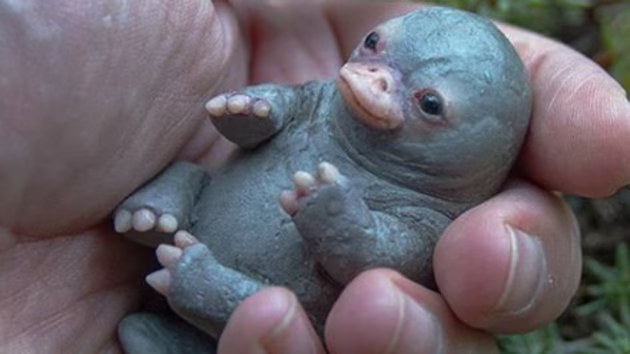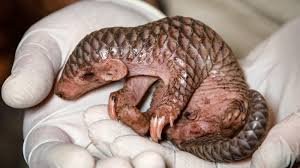
western honey bee
The Bee Behind the Buzz
The Western honey bee (Apis mellifera) is one of the most well-known and important insect species in the world. Found on every continent except Antarctica, this bee is responsible for much more than just making honey. It plays a critical role in pollinating crops, maintaining biodiversity, and supporting natural ecosystems. Often underestimated due to its small size, the Western honey bee is in fact a biological powerhouse that affects global agriculture, food security, and the environment. This article explores the biology, behavior, social structure, and significance of the Western honey bee, offering a close-up view of one of nature’s most valuable creatures.
Taxonomy and Classification
The Western honey bee belongs to the Order Hymenoptera, which includes wasps, ants, and other bee species. Its full classification is: Kingdom: Animalia, Phylum: Arthropoda, Class: Insecta, Order: Hymenoptera, Family: Apidae, Genus: Apis, Species: mellifera. The name Apis mellifera means “honey-bearing bee” in Latin, and it was first described by Carl Linnaeus in 1758. Among the several species in the Apis genus, A. mellifera is by far the most widespread and heavily domesticated. Today, there are over 25 recognized subspecies of the Western honey bee, adapted to various climates and regions across the globe.
Physical Characteristics
A typical worker Western honey bee measures about 12–15 mm in length and weighs roughly 100 milligrams. It has a distinctive body structure with three main segments: head, thorax, and abdomen. The head features compound eyes, antennae, and mandibles for handling food and building the hive. The thorax houses two pairs of wings and three pairs of legs, all covered in fine hairs that help collect pollen. The abdomen has several segments and ends in a stinger in worker bees, used for defense. The body is colored in black and golden-yellow bands, making it easily recognizable. One interesting feature of the honey bee is the pollen basket or corbicula, located on the hind legs, which is used to carry pollen back to the hive.
The Social Structure of the Hive
The Western honey bee is a eusocial insect, meaning it lives in highly organized colonies with division of labor and cooperative care of young. A typical hive contains one queen, thousands of worker bees, and a few hundred drones during the mating season. The queen bee is the only fertile female and is responsible for laying up to 2,000 eggs per day. She also releases pheromones that regulate the behavior and development of the other bees. Worker bees, all sterile females, handle tasks such as foraging, nursing larvae, cleaning, guarding, and temperature regulation. Drones are the males, whose sole job is to mate with virgin queens from other colonies. After mating, they die. The division of roles within the hive is a model of efficiency and cooperation rarely seen in the animal kingdom.
Foraging and Pollination Behavior
One of the most critical contributions of the Western honey bee is its role as a pollinator. As worker bees travel from flower to flower collecting nectar and pollen, they inadvertently transfer pollen grains from one bloom to another, facilitating cross-pollination. This is essential for the reproduction of many plants and the production of fruits, nuts, seeds, and vegetables. Crops such as almonds, apples, blueberries, and melons are heavily dependent on honey bee pollination. According to the FAO, about 75% of the world’s food crops rely to some extent on animal pollinators, and honey bees do the bulk of this work. Foraging bees use the famous “waggle dance” to communicate the direction and distance of food sources to other members of the hive.
Honey Production and Wax
The Western honey bee produces honey by collecting nectar from flowers and storing it in the honey stomach, where enzymes break down complex sugars. Once back at the hive, the nectar is passed from bee to bee and deposited into wax cells, where it is dehydrated and eventually sealed with a wax cap. Honey serves as the primary energy source for the colony, especially during winter when foraging is impossible. Worker bees also produce beeswax from special glands on their abdomens. This wax is used to build the honeycomb structure, which serves as storage for honey, pollen, and developing brood (eggs, larvae, pupae). A strong hive can produce tens of pounds of honey and several ounces of wax in a single season.
Reproduction and Colony Life Cycle
The reproductive cycle begins with the queen laying eggs in individual cells. Fertilized eggs develop into female workers or queens, while unfertilized eggs become drones. Larvae are fed royal jelly for the first few days. Larvae destined to become queens continue to receive royal jelly, while those becoming workers are switched to bee bread, a mixture of pollen and nectar. After several days, the larvae pupate and eventually emerge as adults. New queens are raised during swarming season, when the old queen and part of the colony leave the hive to form a new one. This natural reproduction method ensures the spread and survival of the species. Colonies can live for years, although individual worker bees live around 5–6 weeks in summer and several months in winter.
Communication and Intelligence
Honey bees have developed complex communication systems, primarily using pheromones and movement patterns. The most famous example is the waggle dance, a behavior that encodes distance and direction to food sources relative to the sun. Bees also communicate alarm, queen presence, and hive needs through chemical signals. Research shows that honey bees are capable of learning, memory formation, and problem solving. In controlled experiments, bees have demonstrated the ability to count, understand abstract concepts, and learn tasks through observation. Their tiny brains—containing fewer than 1 million neurons—are incredibly efficient, supporting navigation, teamwork, and environmental adaptation.
Threats to Western Honey Bees
Despite their importance, Western honey bees face numerous threats. Pesticides, particularly neonicotinoids, are harmful to bee nervous systems and foraging behavior. Habitat loss due to urbanization and agriculture reduces access to diverse floral sources. The Varroa destructor mite, a parasitic organism, weakens bees and spreads viruses that can devastate entire colonies. Climate change affects flowering patterns, disrupting food availability. One of the most alarming phenomena is Colony Collapse Disorder (CCD), in which worker bees disappear, leaving behind the queen and a few nurse bees. The exact cause of CCD is believed to be multifactorial, including stress from pesticides, disease, and habitat loss. You can read more about this issue from the EPA.
Human Use and Domestication
Humans have kept bees for thousands of years, with evidence of beekeeping in ancient Egypt, Greece, and China. Today, apiculture (beekeeping) is a vital agricultural practice. Western honey bees are raised for honey, beeswax, royal jelly, propolis, and pollination services. Commercial pollination is especially important in large-scale agriculture—bee colonies are transported across the country to pollinate crops during blooming seasons. Beekeeping has become more sustainable and scientifically managed, with beekeepers using tools like hive inspections, supplemental feeding, and disease treatment to ensure colony health. Urban beekeeping is also on the rise, contributing to green spaces and local ecosystems.
Cultural and Environmental Significance
The Western honey bee holds a place of symbolism and respect in many cultures. In ancient mythology, bees were associated with gods, wisdom, and immortality. Today, they are icons of sustainability, cooperation, and natural harmony. The phrase “busy as a bee” is a reflection of their tireless work ethic. Environmentally, honey bees are keystone pollinators—without them, entire food chains could collapse. While they are not the only pollinators (butterflies, birds, and bats also contribute), Western honey bees are by far the most efficient and economically significant.
Interesting Facts About the Western Honey Bee
- Honey bees must visit about 2 million flowers to make one pound of honey
- A single bee produces 1/12 of a teaspoon of honey in her lifetime
- Worker bees can fly up to 15 miles per hour and cover 5–10 miles in a single trip
- Bees use sun position and polarized light patterns for navigation
- The queen bee can live up to 5 years, while workers live a few weeks to months, depending on season
Conclusion: Protecting Our Pollinators
The Western honey bee is much more than just a honey producer. It is a critical player in agriculture, biodiversity, and ecosystem health. From its complex hive society to its role as a super-efficient pollinator, the honey bee exemplifies adaptation, intelligence, and environmental balance. As their numbers decline due to human activity, it is more important than ever to protect and support bee populations. Whether through organic gardening, planting pollinator-friendly flowers, or avoiding harmful pesticides, everyone can contribute. The survival of the Western honey bee is closely linked to our own, and in protecting them, we are protecting the future of our food systems and planet.






